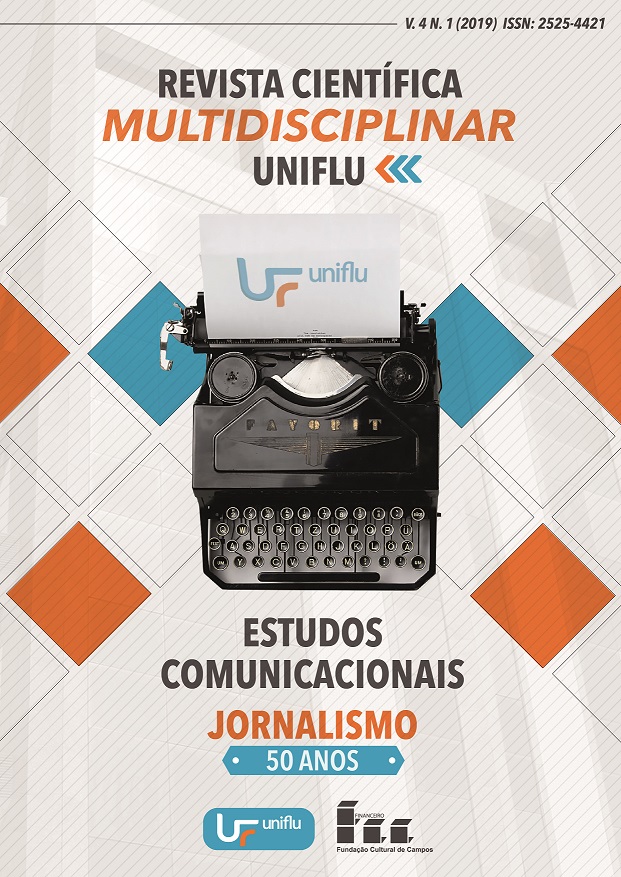PROJETO 'MINHA NOSSA MEMÓRIA' E A PERCEPÇÃO SOCIOCULTURAL DE CAMPOS DOS GOYTACAZES
Resumo
Conhecer a percepção social de cidadãos e cidadãs é de alta importância para compreender demandas e gerar melhoras. Dentro da Teoria das Representações Sociais e da Subjetividade Coletiva, o esforço é sistematizar os discursos individuais, transformando-os em uma malha estrutural para entender a opinião pública, no que se refere tanto í s memórias, quanto í s opiniões sobre sociedade, cultura e política. Compreender o modo com que a sociedade civil se relaciona com esses conceitos nos ajuda a pontuar as capacidades críticas da sociedade, assim como inferir sobre sua agência no meio social. Conclui-se que há distinções importantes entre a população rural e a zona urbana; que há alta insatisfação diante de práticas do atual governo; com traços de desconfiança nas instituições e baixa capacidade crítica; com alta carga de memória afetiva com o local, onde memórias socialmente compartidas superam as experiências individuais.
Referências
BERTSOU, E. Rethinking political distrust. European Political Science Review, v. 11, n. 2, p. 213-230, Maio 2019. DOI: 10.1017/S1755773919000080.
BOURDIEU, P. O poder simbólico. Rio de Janeiro: Bertrand Brasil, 2006.
BRINKERHOFF, D.; WETTERBERG, A.; WIBBELS, E. Distance, services, and citizen perceptions of the state in rural Africa. Wiley Governance, v. 31, p. 103-124, 2017. DOI: 10.1111/gove.12271.
CARDENAL, A. S. et al. Digital Technologies and Selective Exposure: How Choice and Filter Bubbles Shape News Media Exposure. International Journal of Press/Politics, v. 24, n. 4, p. 465-489, 2019. ISSN 19401612 (ISSN). DOI: 10.1177/1940161219862988.
DOMINGUES, J. M. Public opinion and collective subjectivity: a conceptual approach. Distinktion: Journal of Social Theory, v. 19, n. 3, p. 249-267, 2018. DOI: 10.1080/1600910X.2018.1495091.
EADY, G. et al. How Many People Live in Political Bubbles on Social Media? Evidence From Linked Survey and Twitter Data. SAGE Open, v. 9, n. 1, 2019. ISSN 21582440 (ISSN). DOI: 10.1177/2158244019832705.
FAIRCLOUGH, N. El análisis crítico del discurso como método para la investigación en ciencias sociales. In: WODAK, R.; MAYER, M. Métodos de análisis crítico del discurso. Barcelona: Gedisa, 2003. p. 173-194.
FERNANDES, H. Do burocratês í popularização da informação: a sociologia de poder explicando a linguagem cidadã. In: GOMES, A. M. (. ). Fenômenos linguísticos e fatos da linguagem. Ponta Grossa: Atena Ed., 2019. Cap. 8, p. 81-95. 10.22533/at.ed.6041925118.
HAGGARD, P. Conscious intention and motor cognition. Trends in Cognitive Sciences, v. 9, n. 6, p. 290-295, 2005. ISSN 13646613 (ISSN). DOI: 10.1016/j.tics.2005.04.012.
HAGGARD, P. Sense of agency in the human brain. Nature Reviews Neuroscience, v. 18, n. 4, p. 197-208, 2017. ISSN 1471003X (ISSN). DOI: 10.1038/nrn.2017.14.
HALL, S. A identidade cultural na pós-modernidade. São Paulo: DP&A, 2007.
HOWARTH, C. Representations, identity and resistance in communication. In: HOOK, D.; FRANKS, B.; BAUER, M. Communication, Culture and Social Change: The Social Psychological Perspective. London: Palgrave Macmillan, 2011. Cap. 7.
KAAKINEN, M. et al. Shared identity and shared information in social media: development and validation of the identity bubble reinforcement scale. Media Psychology, v. 23, n. 1, p. 25-51, 2020. ISSN 15213269 (ISSN). DOI: 10.1080/15213269.2018.1544910.
KINGDON, J. W. Agendas, alternatives and public policies. Essex: Pearson, 2014.
LACLAU, E. A razão populista. São Paulo: Três Estrelas, 2013.
LI, M. et al. Cultural group perception enhances sense of agency in a multicultural society. Scandinavian Journal of Psychology, v. 60, n. 4, p. 394-403, 2019. ISSN 00365564 (ISSN). DOI: 10.1111/sjop.12552.
MOSCOVICI, S. Notes towards a description of Social Representations. European Journal of Social Psychology, v. 18, n. 3, p. 211-250, 1988. ISSN 00462772 (ISSN). DOI: 10.1002/ejsp.2420180303.
MOSCOVICI, S.; NÉVE, P. Studies in social influence: II. Instrumental and symbolic influence. European Journal of Social Psychology, v. 3, n. 4, p. 461-471, 1973. ISSN 00462772 (ISSN). DOI: 10.1002/ejsp.2420030408.
PATTERSON, T. C. Too much common sense, not enough critical thinking! Dialectical Anthropology, California, v. 40, n. 3, p. 251-258, 2016. DOI: 10.1007/s10624-016-9434-5.
RIBEIRO, B. et al. Digital bubbles: living in accordance with personalized seclusions and their effect on critical thinking. World Conference on Information Systems and Technologies, WorldCIST 2019. [S.l.]: Springer Verlag. 2019. p. 463-471. DOI: 10.1007/978-3-030-16187-3_45.
SOUZA, J. A tolice da inteligência brasileira: ou como o país se deixa manipular pela elite. São Paulo: LeYa, 2015.
STRANGE, J. H. The Impact of Citizen Participation on Public Administration. Public Administration Review, v. 32, n. Special Issue, p. 457-470, Sep 1972. DOI: 10.2307/975015.
TAJADURA-JIMÉNEZ, A.; GREHL, S.; TSAKIRIS, M. The other in me: Interpersonal multisensory stimulation changes the mental representation of the self. PLoS ONE, v. 7, n. 7, 2012. ISSN 19326203 (ISSN). DOI: 10.1371/journal.pone.0040682 10.1371/journal.pone.0006933.
VALENTINO, A.; FINO, C. La información como discurso. Recorridos teóricos y pistas analíticas. La Plata: Universidad Nacional de La Plata. Facultad de Periodismo y Comunicación Social, 2015.
VAN DIJK, T.; MENDIZíBAL, I. Análisis del discurso social y político. Quito: ABYA-YALA, 1999.
WILKENFELD, D. A. Understanding as representation manipulability. Synthese, Columbus, OH, v. 190, n. 6, p. 997-1016, 2013. DOI: 10.1007/s11229-011-0055-x 10.1111/j.1933-1592.2004.tb00382.x.


